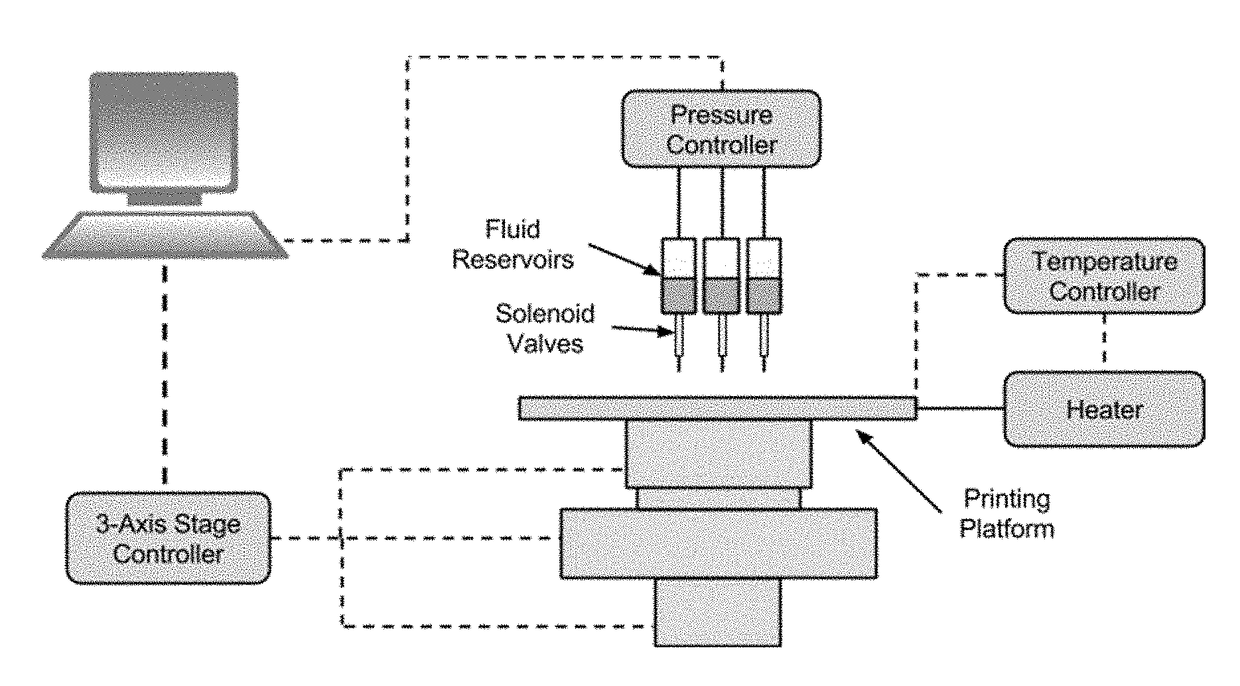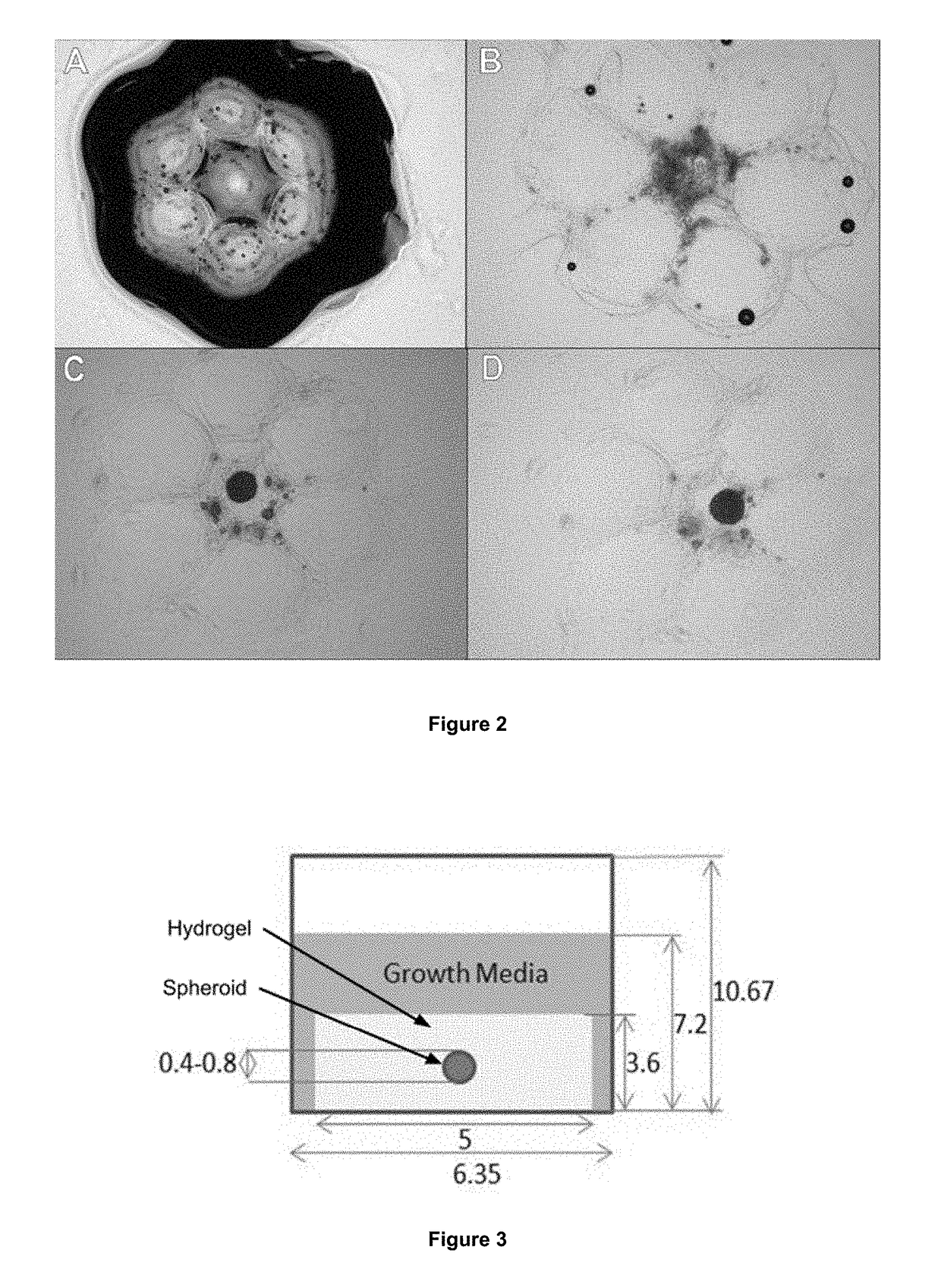Process for printing 3D tissue culture models
- Summary
- Abstract
- Description
- Claims
- Application Information
AI Technical Summary
Benefits of technology
Problems solved by technology
Method used
Image
Examples
example 1
Materials and Methods
[0167]Alginate (high >55% guluronic acid content, 50,000-80,000 g / mol, FMC Biopolymer), calcium chloride (BioReagent, Sigma Aldrich), phosphate buffered solution without calcium chloride (PBS, Gibco), Dulbecco's modified eagle medium (DMEM, Gibco), calcium free DMEM (Gibco), sodium pyruvate (Gibco), L-glutamine (Gibco), Gellan gum (Sigma Aldrich), trypsin (Sigma Aldrich), 0.22 μm syringe filter (polyethersulfone membrane, Merck Millipore), T150 flask (Corning), 15 ml centrifuge tube (Corning), ethanol (Sigma Aldrich), were used as received. Tissue culture media was made by mixing DMEM with FCS at 10 v / v %.
Cell Type
[0168]SK-N-BE(2) neuroblastoma cells were used.
Cell Culture
[0169]Neuroblastoma at 80% confluency in a T150 flask was washed with 3 ml PBS. After aspiration of excess PBS, 3 ml of trypsin was added and the flask was incubated at 37° C. to dissociate cells from flask surface for 5 minutes. Subsequently, 7 ml of tissue culture media was added and the diss...
example 2
[0181]Hydrogel mold or cup was printed using bio-ink, cell-ink and activator, as detailed in Example 1, at a supply pressure of 40 psi, 12 psi and 5 psi respectively. SK-N-BE(2) cells in cell-ink were printed into centre of hydrogel cup at a concentration of 100 million cells / ml. Microscope images of the printed 3D cell culture model showed cell spheroid formation after incubation for 24, 48 and 120 hours.
example 3
[0182]Hydrogel mold or cup was printed using bio-ink and activator, as detailed in Example 1, at a supply pressure of 40 psi and 5 psi respectively. The cell-ink was Ficoll™ (Sigma Aldrich, 1.65 g) dissolved in PBS (10 ml) to give 16.5 w / v %. SK-N-BE(2) cells in cell-ink were printed into centre of hydrogel cup at a concentration of 250 million cells / ml, at a supply pressure of 20 psi. Microscope images of the printed 3D cell culture model showed cell spheroid formation after incubation for 24, 48 and 72 hours.
PUM
| Property | Measurement | Unit |
|---|---|---|
| Cell viability | aaaaa | aaaaa |
| Temperature | aaaaa | aaaaa |
| Concentration | aaaaa | aaaaa |
Abstract
Description
Claims
Application Information
 Login to View More
Login to View More - Generate Ideas
- Intellectual Property
- Life Sciences
- Materials
- Tech Scout
- Unparalleled Data Quality
- Higher Quality Content
- 60% Fewer Hallucinations
Browse by: Latest US Patents, China's latest patents, Technical Efficacy Thesaurus, Application Domain, Technology Topic, Popular Technical Reports.
© 2025 PatSnap. All rights reserved.Legal|Privacy policy|Modern Slavery Act Transparency Statement|Sitemap|About US| Contact US: help@patsnap.com



